Experience The Magnificence Of Mandi’s Ancient Marvel At Bhutnath Temple In 2025
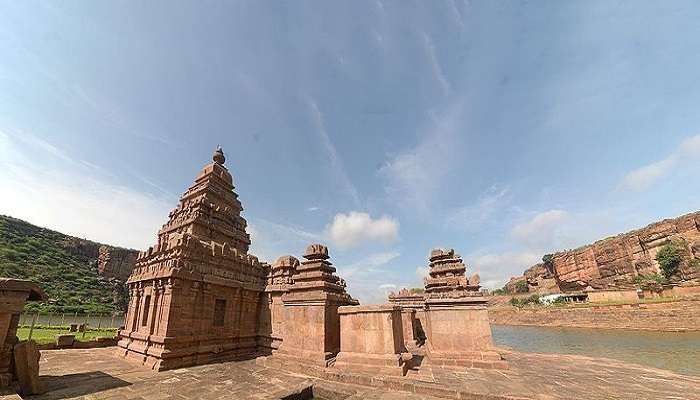
The Bhutnath Temple, located in the heart of Mandi, Himachal Pradesh, is a prime institution representing the area’s rich cultural heritage and spiritual significance. This ancient temple dedicated to Lord Shiva has been a focal point for devotion and architectural wonder for centuries. History blended with mythology and artistic craftsmanship draws both devotees and tourists here, making it a must-visit spot for anyone who comes to explore the enchanting landscapes of Himachal Pradesh.
About Bhutnath Temple

One of the most ancient and holiest shrines in Mandi is the Bhutnath Temple, also locally termed Bhootnath or Bhootnath Mandir. The temple is dedicated to Lord Shiva in his aspect as “Lord of Ghosts” or “Bhootnath.” This temple is of immense spiritual and historical significance.
The architectural style of the temple is an exquisite example of the Nagara style, represented by its ornate shikhara (spire) and intricate cutting of the stone. The main sanctum inside houses the lingam, an aniconic representation of Lord Shiva, the principal object of worship.
Also Read: Travel Tips For Himachal Pradesh
Historical Significance Of Bhutnath Temple
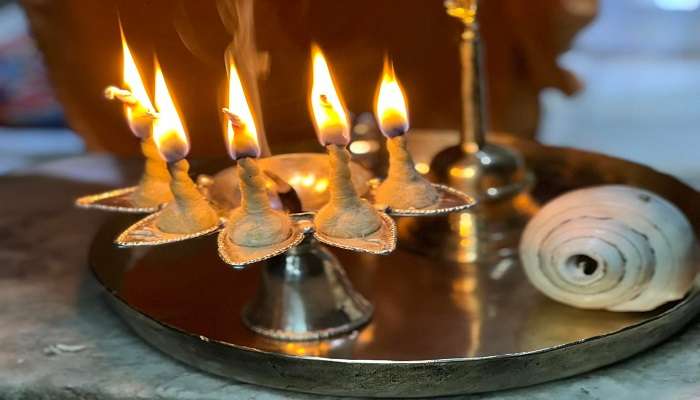
Though the exact date of the temple is unknown, local legends backed by historical records prove that it was at least as old as the 16th or maybe even older, dating to the 7th or 8th century. The temple gained prominence during the reign of the Mandi royal family, who were great devotees of Lord Shiva. Through the contributions of various rulers, the temple grew and gained beauty over the centuries.
Local folklore is one of the most fascinating facts connected with Bhutnath Temple. According to legend, the temple was built to appease spirits and ghosts haunting this area; hence, the name “Bhootnath” or “Lord of Ghosts.” This unique mythology adds an absorbing layer to the temple’s rich history.
Architectural Marvel Of Bhutnath Temple
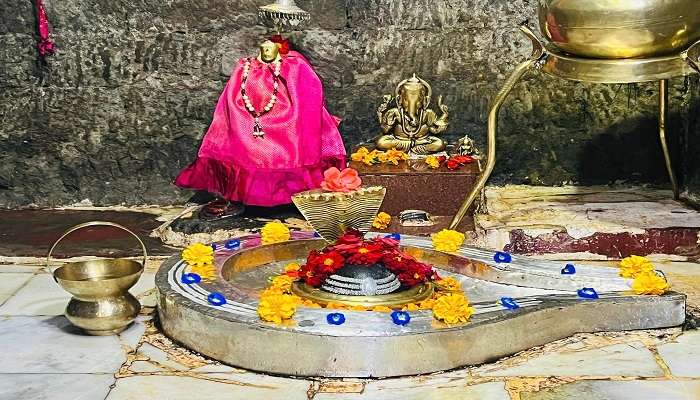
The Bhutnath Temple is among the finest examples of North Indian temple architecture. It combines two different styles, the Himachali and classic North Indian styles, which make it outstandingly different in its look.
The main architectural features are:
Shikhara: This tall Shikhara over the sanctum sanctorum is the main striking feature of this temple. The Shikhara is fully covered with sculptures and figurative carvings. It is Typical of the Nagara style and denotes the sacred Mount Kailash, the abode of Lord Shiva.
Mandapa: This temple hall, spacious to hold many devotees for prayers and rituals, is called a mandapa. Its ceiling is further beautified by exquisite frescoes depicting scenes from Hindu mythology.
Stone carvings: Outside the temple’s exterior walls are exquisite stone carvings showing various deities, mythological scenes, and geometric patterns. These are examples of fantastic craftsmanship by the artisans of the time.
Garbhagriha: A Shiva lingam is kept in the innermost sanctum. The atmosphere designed for the garbhagriha evokes feelings of reverence and spiritual contemplation.
Nandi Statue: It is present facing the main shrine, just as it is in the case with most Shiva temples, in the form of a statue of Nandi, the sacred bull and mount of Lord Shiva.
Related Post: Things To Do In Spiti Valley
Places To Visit Near Bhutnath Temple
As the Bhutnath Temple can be visited, travellers can also find several other attractions around Mandi. These include the following:
1. Rewalsar Lake
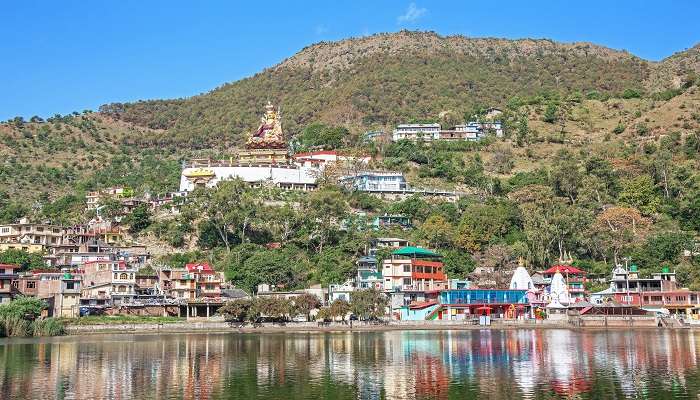
One of the sacred places for Hindus, Sikhs, and Buddhists, situated 25 km away from Mandi, is Rewalsar Lake. It is a peaceful lake surrounded by monks and monasteries, which calms the entire surroundings. It is related to the legends of Padmasambhava, who founded Tibetan Buddhism. One can have boat rides or feed the fish, swim in the lake, and rest in the tranquil atmosphere.
Location: Rewalsar, Mandi District, Himachal Pradesh 175023
Timings: Open 24 hours
Distance: About 25 km from Bhutnath Temple
Entry Fee: None
2. Panchvaktra Temple
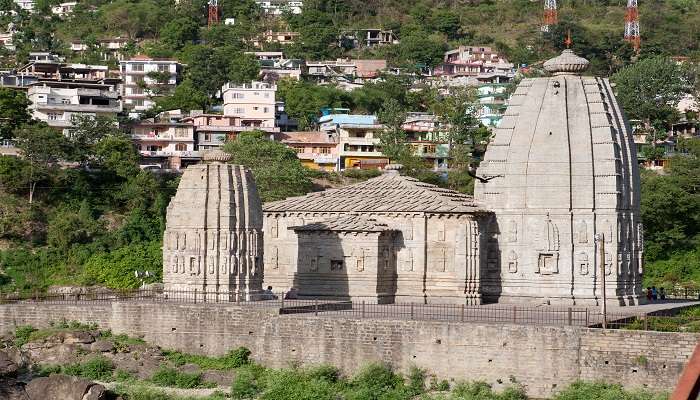
Another ancient shrine dedicated to Lord Shiva is the Panchvaktra Temple. The most peculiar feature of this temple is the five-faced (Panchvaktra) Shiva lingam, representing the five essential elements of nature. The temple’s structure fuses the Nagara style with local Himachali styles, along with finely done stone carvings and a beautiful shikhara. It is said to have been built by the Pandavas during their exile.
Location: Purani Mandi, Mandi, Himachal Pradesh 175001
Timings: 6:00 AM to 8:00 PM
Distance: About 1 km from Bhutnath Temple
Entry Fee: Free
Related Post: Kuthar Fort Himachal Pradesh
3. Prashar Lake
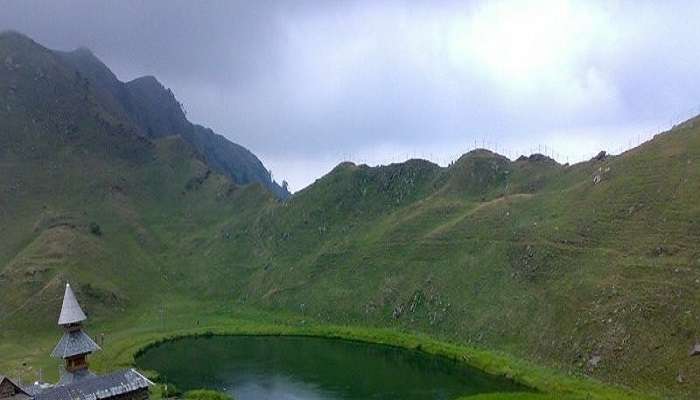
Prashar Lake is 49 km by road off Mandi. A high-altitude lake, its beauty is as appealing as its spirituality. Bounded by snow-capped Dhauladhar, the lake is a fantastic site. On and off, an unreal floating island forms in this lake with a breathtaking view. The other highlight is the ancient pagoda-like temple dedicated to sage Prashar on the bank of the lake.
Location: Prashar, Mandi District, Himachal Pradesh 175121
Timings: Open 24 hours
Distance: Approximately 49 km from Bhutnath Temple
Entry Fee: None
4. Triloknath Temple

Another central Shiva shrine in Mandi is the Triloknath Temple. The temple presents interest not only from the point of view of architecture, with extremely outstanding stone carvings and an elegant shikhara, but it is also of great religious significance since it is dedicated to Lord Shiva as the lord of the three worlds. Its location provides a fine view of the Beas River and the general valley.
Location: Purani Mandi, Mandi, Himachal Pradesh 175001
Timings: 6:00 AM to 8:00 PM
Distance: About 500 meters from Bhutnath Temple
Entry Fee: Free
Related Post: Best Places To Visit In Himachal Pradesh
5. Kamru Nag Lake
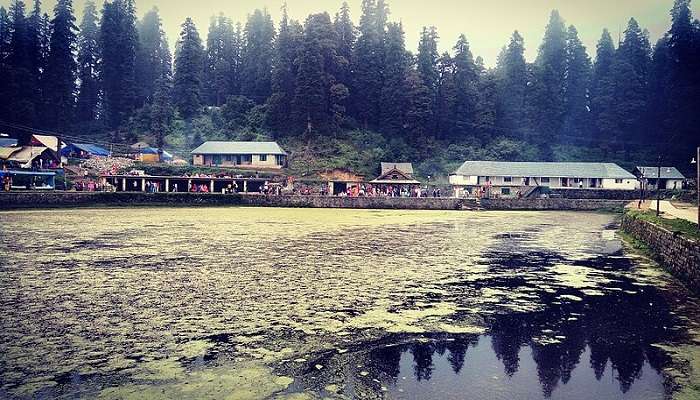
The Kamru Nag Lake is hidden amongst dense forests and is considered a gem. This beautiful lake is considered the home of the local deity, Kamru Nag, the rain god. The waters are crystal clear and reflect the greenery around the lake, which presents a breathtaking view. Besides this, there is a small temple dedicated to Kamru Nag. They regarded him as the rain god. So, the ambience around the lake is very apt for nature walks and picnics.
Location: Kamru Nag, Mandi District, Himachal Pradesh
Timings: Open 24 hours
Distance: Approx. 80 km from Bhutnath Temple
Entry Fee: Free
How To Reach Bhutnath Temple

Reaching the Bhutnath Temple is relatively easy due to its central location in Mandi town. Here are some ways to get there:
By Air: The nearest airport is Bhuntar Airport in Kullu, which is about 60 km away. From there, you can take a taxi or bus to Mandi.
By Rail: The closest central railway station is Joginder Nagar, approximately 50 km from Mandi. You can hire a taxi or take a bus to reach the temple.
By Road: Mandi is well-connected by road to major cities in Himachal Pradesh and neighbouring states. Regular bus services and taxis are available from cities like Shimla, Kullu, and Dharamshala.
You May Also Like To Read: Spiti Valley In June
The Bhutnath Temple in Mandi has an identity beyond a religious site. Its ancient walls reverberate with centuries of devotion, and its intricate carvings narrate tales of mythological lore. Whether history, architecture, or spirituality, Bhutnath Temple offers any seeker a rich and rewarding experience. So, pack your bags and book your trip to Himachal Pradesh, allowing the ancient charm of Bhutnath Temple and the beauty of Mandi to capture your senses.
For our editorial codes of conduct and copyright disclaimer, please click here.
Cover Image Credit: pangalactic gargle blaster and the heart of gold for Wikimedia Commons.
Frequently Asked Questions About Bhutnath Temple
What is the best time to visit Bhutnath Temple?
The best time to visit is during the summer months (April to June) and post-monsoon season (September to November) when the weather is pleasant. However, the temple is open year-round, and winter visits can offer a unique, snow-covered experience.
Are there any special festivals celebrated at Bhutnath Temple?
Yes, the temple celebrates several festivals with great fervor. The most important ones are Mahashivratri in February/March and Shravan month (July/August), when special pujas and cultural events are organized.
Is photography allowed inside the Bhutnath Temple?
Photography is generally allowed on the temple premises. Still, it may be restricted to the main sanctum. It's always best to ask for permission from the temple authorities before taking photographs.
Are there any dress code requirements for visiting the temple?
While there's no strict dress code, it's advisable to dress modestly out of respect for the religious site. Covering shoulders and knees is recommended.
Are there accommodation options near Bhutnath Temple?
Yes, Mandi town has several accommodation options ranging from budget hotels to more luxurious stays. Many are within walking distance of the temple, making it convenient for visitors.
People Also Read:
Kanniga Parameswari Temple Bhavishya Kedar Temple Kasar Devi Temple

With a passion for exploring and travelling to the roads long forgotten, experience the world through enthralling stories and adventures. Join me as I share my experiences at some of the world’s most popular tourist destinations and quench that pestering curiosity with something exciting!











